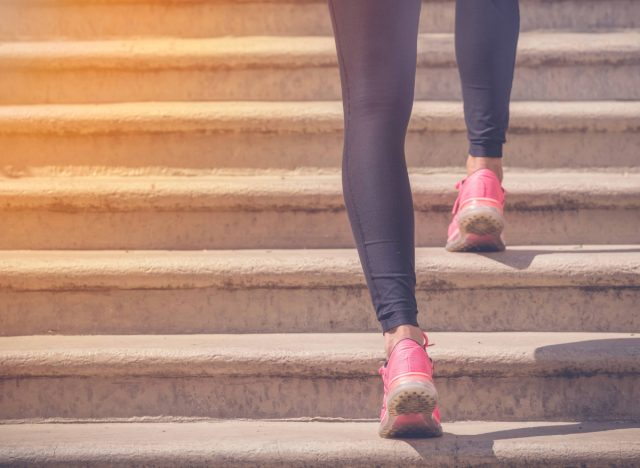Is Walking Enough To Stay Strong & Fit After 50?

Lacing up your sneakers and getting in daily steps is one of the best fitness habits to build. Both your mind and body reap the benefits of this low-impact cardio workout. Head outdoors—even better! Fresh air, warm rays of sunshine, and enticing new routes and trails await. But once you hit 50, is walking enough to stay strong and fit? We spoke with experts who share everything to know if walking is your go-to form of exercise.
Is Walking Enough To Stay Strong and Fit After 50?

Walking is great for boosting heart health, improving joint mobility, and keeping your body active, but keep in mind that it’s not enough on its own to maintain muscle strength after 50.
“As we age, muscles naturally shrink unless they are challenged with resistance. Walking mainly works the legs at a low intensity, so it doesn’t build much strength in the upper body or core,” says Denise Chakoian, Rhode Island certified fitness trainer and owner of Core Cycle and Fitness La Gree. “To hold on to muscle, it helps to add in squats, pushups, or lifting weights to your routine. Walking can still play a big role by improving endurance and keeping the joints flexible.”
Dr. Kira Capozzolo, a chiropractor based in Solana Beach, CA and co-founder of Twin Waves Wellness Center, agrees that walking on its own simply won’t cut it. “It’s a great foundation, but the people I see thriving after 50 are the ones who combine walking with resistance training, core work, and mobility exercises,” she says. “That combination keeps the heart healthy, the muscles strong, and the joints moving well — and it directly addresses the hormonal shifts that accelerate muscle breakdown.”
Strength training becomes more crucial than ever when you reach your 30s, 40s, 50s, and beyond. It directly trains your bones and muscles, slowing down the loss of both.
That said, walking and resistance training support different needs, and a combination of both makes for a well-rounded fitness routine that supports overall health and muscle preservation.
“Walking [is essential] for endurance and mobility, lifting for strength and stability,” Chakoian points out. “For aging bodies, combining the two gives the best results for long-term health.”
How To Optimize Your Walking Workouts To Build Power and Endurance

Incorporating intervals—quick bursts of fast walking—helps your body move with more power. In addition, tackling hills or stairs adds an extra challenge, forcing your leg muscles to work harder.
“For endurance, it helps to go for longer walks at a steady pace without stopping. Using intervals, like two minutes fast and three minutes easy, is a good way to train both at once,” Chakoian says. “Arm swings and a stronger push off the toes make each step more powerful. Carrying light hand weights or wearing a weighted vest can also increase the challenge carefully. By mixing these methods, walking can go beyond being just light exercise and turn into real training for strength and stamina.”
Looking for more easy ways to lose fat? Here’s How Long Your Walking Workout Should Be To Shrink Belly Fat.